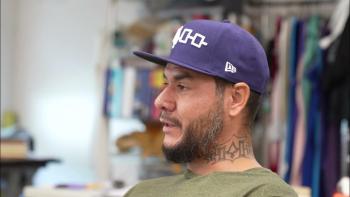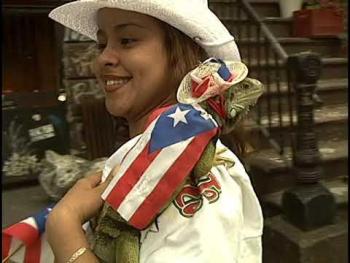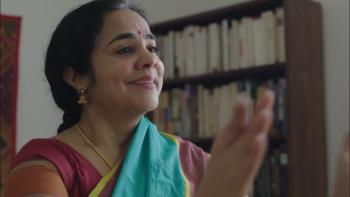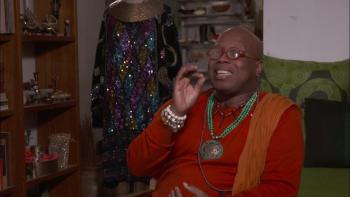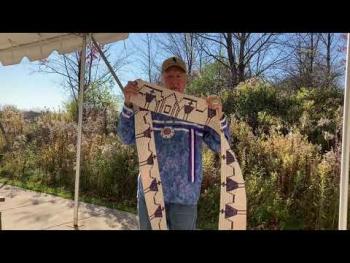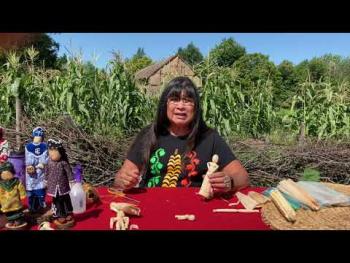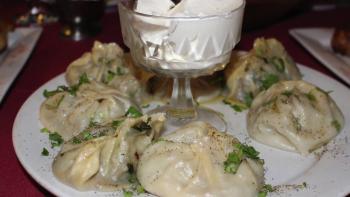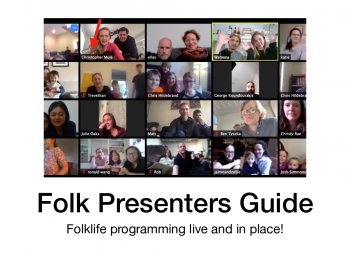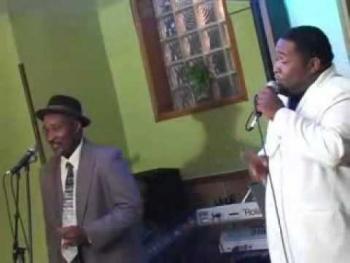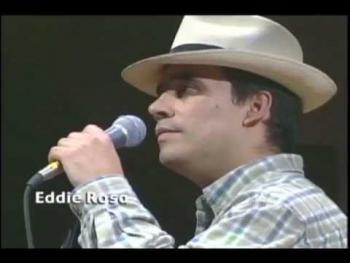Browse Digital Heritage
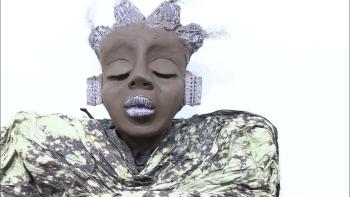
"The Calling: The Transformative Power of African American Doll and Puppet Making" is an exhibition of dolls and puppets created by senior African American multi-media artists. These artists came of age in strong African American communities during the height of the Civil Rights Movement. They are storytellers who use various forms of mixed media to chronicle the history, identity, and culture of their communities. These artists recognize that their works are healing and transformative for themselves and for the communities they represent.
Material Culture
Onöndowa’ga:’ (Seneca) bone and antler carver, Hayden Haynes (Deer Clan), shares his inspirations, creative process, and the multifaceted approach he employs to hone his skills and revitalize the ancestral craft within his community.
Material Culture
The display of la bandera puertorriqueña was pretty common all year long throughout the five boroughs of New York City, waving from car antennas, painted on wall murals, or draped from windows, fire escapes and card hoods; but from the end of May until the middle of June,prior to and during the National Puerto Rican Day Parade in Manhattan (always the second Sunday in June), it reaches its peak. It is hard to walk anywhere in the City without seeing the image proudly displayed or worn. Any item or apparel imaginable is adorned or decorated with the image: umbrellas, shorts, ties, fingernails, hats, jewelry, sunglasses. This was especially true from the late 1990s through the early 2000s. It appears as if this custom may have peaked a few years ago, and during the last few years the flag seems to be less visible in the time period leading up to the parade. This latest trend may have arisen due to do with grassroots and official campaigns intended to make sure the flag is used only in a respectful manner, a decline in the flag fever pitch of those years and recent economic and environmental crises on the island leading many to use a black and white monoestrellada to represent the dual ideas of mourning and resistance.
Place
Material Culture
All of us as have two experiences in common — birth and death. One is greeted with joy and celebration; the other is often accompanied by a wide range of emotions such as fear, relief, sorrow, joy, grief, and loss. In the process of dying, and in death itself, cultural practices and rituals play a key role in the individual’s and family’s experience of end-of-life. Understanding how death and dying have come to be expressed in culturally-specific traditions and diverse art forms offers remarkable insight into end-of-life situations, allowing healthcare professionals to develop essential cultural competencies and increased empathy.
The End-of-Life Toolkit is a set of resources that accompanies an eLearning course entitled “Heritage to Health: Harnessing the Power of the Arts for End-of-Life Care”. The Toolkit provides resources on death and dying, geared to both health professionals and the public. It contains links to textbooks, stories, poems, cultural perspectives on death and dying, as well as compelling video clips, examples of various art forms, and “how to” information for creating various types of memorials when an individual passes away. The Toolkit expands the opportunities for healthcare providers to enhance their skills in end-of-life care through the use of the Arts. It focuses on ways to create a culturally sensitive yet individualized environment for those at the end-of-life, using the Arts as a clinical tool for supporting patients’ beliefs, traditions, and customs in a meaningful way.
Developed by City Lore and the Nurse Practitioner Healthcare Foundation. Funded by the Robert Wood Johnson Foundation and the National Endowment for the Arts.
Dance
Belief
All of us as have two experiences in common — birth and death. One is greeted with joy and celebration; the other is often accompanied by a wide range of emotions such as fear, relief, sorrow, joy, grief, and loss. In the process of dying, and in death itself, cultural practices and rituals play a key role in the individual’s and family’s experience of end-of-life. Understanding how death and dying have come to be expressed in culturally-specific traditions and diverse art forms offers remarkable insight into end-of-life situations, allowing healthcare professionals to develop essential cultural competencies and increased empathy.
The End-of-Life Toolkit is a set of resources that accompanies an eLearning course entitled “Heritage to Health: Harnessing the Power of the Arts for End-of-Life Care”. The Toolkit provides resources on death and dying, geared to both health professionals and the public. It contains links to textbooks, stories, poems, cultural perspectives on death and dying, as well as compelling video clips, examples of various art forms, and “how to” information for creating various types of memorials when an individual passes away. The Toolkit expands the opportunities for healthcare providers to enhance their skills in end-of-life care through the use of the Arts. It focuses on ways to create a culturally sensitive yet individualized environment for those at the end-of-life, using the Arts as a clinical tool for supporting patients’ beliefs, traditions, and customs in a meaningful way.
Developed by City Lore and the Nurse Practitioner Healthcare Foundation. Funded by the Robert Wood Johnson Foundation and the National Endowment for the Arts.
Ritual
Belief
Otgoä (wampum) is a vital part of Haudenosaunee culture. Wampum are shell beads that are created from whelk and quahog clam shells. The brittle pieces are rounded, sanded, and drilled to make a bead. Because of the effort that is needed to make a bead, wampum is highly valued.
Material Culture
Haudenosaunee storytelling is not meant to just entertain but to also teach. Stories are used to warn against dangerous and bad behavior, uphold valued qualities, and teach good decision making. If you travel to different Haudenosaunee communities, you will discover that each community may have their own version of a story. There is no one version that is upheld over the others, but if you listen you will discover that although the details may be slightly different, the lessons taught remain the same.
Material Culture
Amidst COVID-19, many arts practices, including performances, workshops, lessons, and discussions, have moved online. This is a resource for artists and consultants who wish to livestream practices. It also calls to attention the process of tradition and traditional arts as practices move from in-person to digital spaces.
Material Culture
Currently, an "Extempo King" is crowned each year as part of the carnival in Trinidad. Three-time Extempo King Black Sage (Phillip Murray) has performed in New York a number of times along with other calypso masters including Mighty Gypsy (Winston Peters). In this scene, filmed at the Tropical Paradise, a Trinidadian restaurant in Brooklyn, Black Sage duels against a relative newcomer to the scene, Fat Man George. These picong performances preserve an important part of Afro-Caribbean culture and heritage.
Music
Verbal Arts
The concert featured artists from Mexico, Colombia, and Puerto Rico singing décima verses in the manner of those countries. Décima is a verse form of ten lines consisting of eight syllables each. It originated in Spain in the 1500s but has spread throughout Latin America.
Music
Verbal Arts
Search
Tradition
Community
- (-) Remove City Lore filter City Lore
Culture
- Puerto Rico (2) Apply Puerto Rico filter
- Trinidad and Tobago (2) Apply Trinidad and Tobago filter
- African-American (1) Apply African-American filter
- Haudenosaunee (1) Apply Haudenosaunee filter
- India (1) Apply India filter
- Onöndowa’ga:’ (Seneca) (1) Apply Onöndowa’ga:’ (Seneca) filter
- Tajikistan (1) Apply Tajikistan filter

